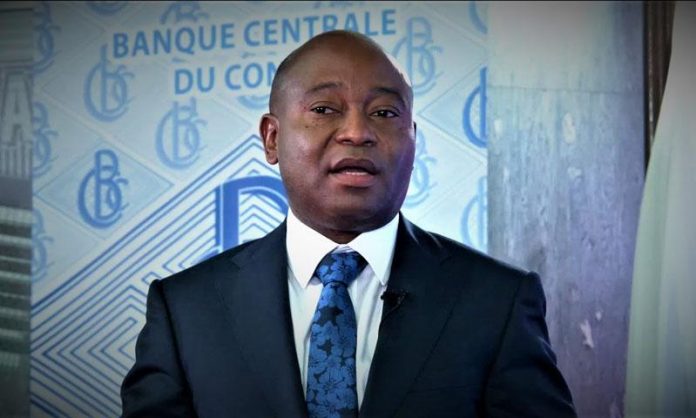The Central Bank of Congo surprised, this weekend of August 15, by raising its key rate from 7.5% to 18.5%. The institution notes a resumption of inflationary pressures, but considers that the economic recession in DR Congo could be less than feared in 2020.
Like most African central banks, the BCC (Central Bank of Congo) had lowered its key rate in order to support the economy, even before the first signs of the arrival of the coronavirus epidemic in the spring.
From now on, the BCC intends to contain monetary expansion and curb inflation. Moreover, with an inflation forecast of 20.7% over one year, the rate of 18.5% is a little below the “positivity” requested by Governor Deogratias Mutombo Mwana Nyembo. Which wants to “watch how the market will move” before adjusting the key rate, potentially upward.
The Monetary Policy Committee (CPM) of the Central Bank of Congo details, on August 17, its conclusions. He notes that the world economy remains “strongly affected” by the consequences of Covid-19.
The impact of this pandemic on African economies is expected to be more severe, particularly in 2020, than that of previous crises on the continent. This decline in country activity (-3.4% according to the ADB) in 2020 is the consequence of measures taken by the authorities to limit the spread of the disease. “This situation is likely to undermine the performance recorded in recent years, especially in terms of poverty reduction.”
In this context, governments are encouraged to take adequate and urgent measures aimed not only at mitigating the socio-economic impact of the crisis but above all at protecting the most vulnerable populations through well-targeted social protection measures. However, a resumption of activity is expected from 2021.
Regarding world commodity prices, the CPM notes the rise in copper and oil prices, which began in May. In July, the prices of these products increased by almost 11% and 6% respectively. Cobalt, a product of interest also in DR Congo, saw its price drop by 2.1%.
Encouraging results!
Domestically, the CPM considers that the contraction of the Congolese economy should be less severe than that estimated on the basis of achievements at the end of March. Due in particular to the good behavior of activities in the mining sector, thanks to the confinement of workers in the mines, as well as the trend of good world prices.
The Central Bank forecasts a contraction of 1.7% of GDP in 2020, against -2.4% estimated in March. The CPM notes “the encouraging results” recorded in the first half of the year. Which, combined with response measures against Covid-19, improved business confidence in July.
On the other hand, in the goods and services market, on a monthly basis, there was a slight acceleration in inflation in July. That is 2.95% against 2.55% the previous month. This, against the backdrop of a shortage of supply, in a context of exits from containment, both in DR Congo and in importing countries. On a year-over-year basis, inflation stood at 14.6%. In this context, with unchanged conditions, the year could end with inflation of 20.7%, against a medium-term target of 7% per year.
In terms of public finances, the financial operations of the State ended in July in a deficit of 182 billion Congolese francs (78.84 million euros). However, government spending was financed by Treasury bill issuance for 23.7 billion Congolese francs, and benefited from IMF support for 158.2 billion.
Risks of tension!
Finally, in terms of foreign exchange, the CPM notes that the measures taken have made it possible to contain the pressures on the Congolese franc, observed on the market. The currency even tends to appreciate, during the last week of July and the first weeks of August.
Likewise, foreign exchange reserves are maintained at 3 weeks and 2 days. For their part, the instruments of monetary policy are all geared towards draining liquidity. This coordination of instruments has contributed to the drying up of bank liquidity, as evidenced by the level of free bank assets, which has turned negative.
This is why, given “the risks of tensions in both the goods and services market and the foreign exchange market”, the CPM has decided to further tighten its system. It therefore decides to raise the key rate to 18.5% The minimum reserve ratios are maintained (at 13% on sight deposits in foreign currency, for example). The Central Bank believes that liquidity regulation will thus continue, with the bond it issues (BCC bond) becoming more attractive with the rise in rates.
Finally, the CPM “urges the government to continue and intensify the efforts of fiscal adjustment and revenue mobilization”. The state must “further contribute to the macroeconomic stability essential to lay the foundations for a strong and resilient economic recovery.”
Reference: https://deskeco.com/2020/08/14/rdc-la-banque-centrale-releve-son-taux-directeur-de-75-185































